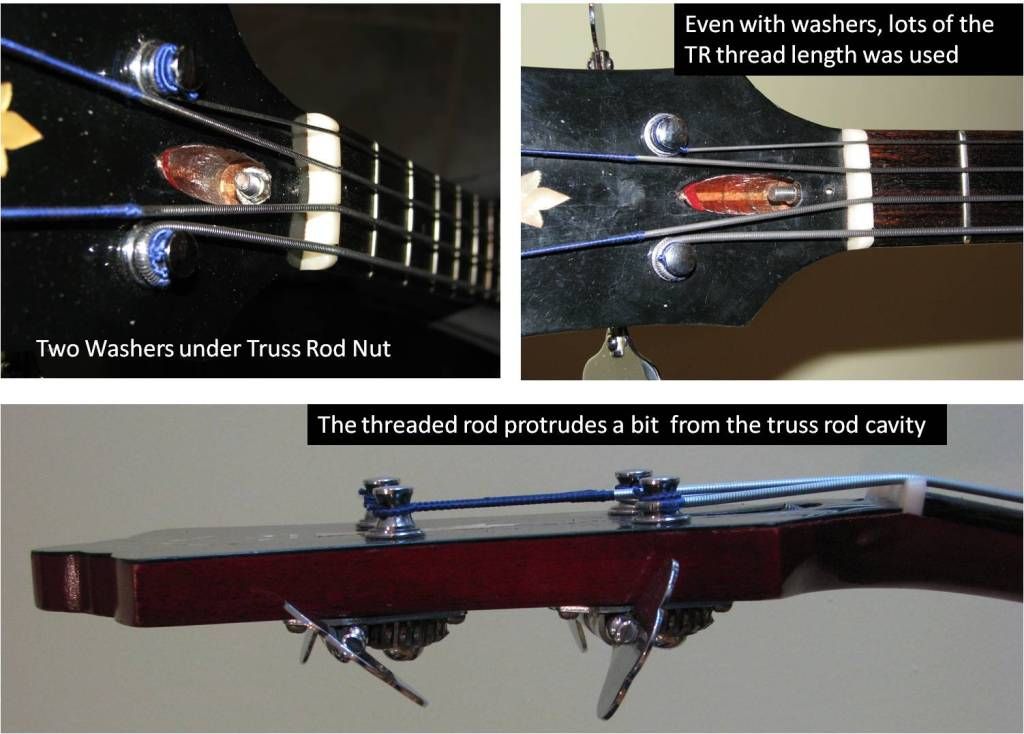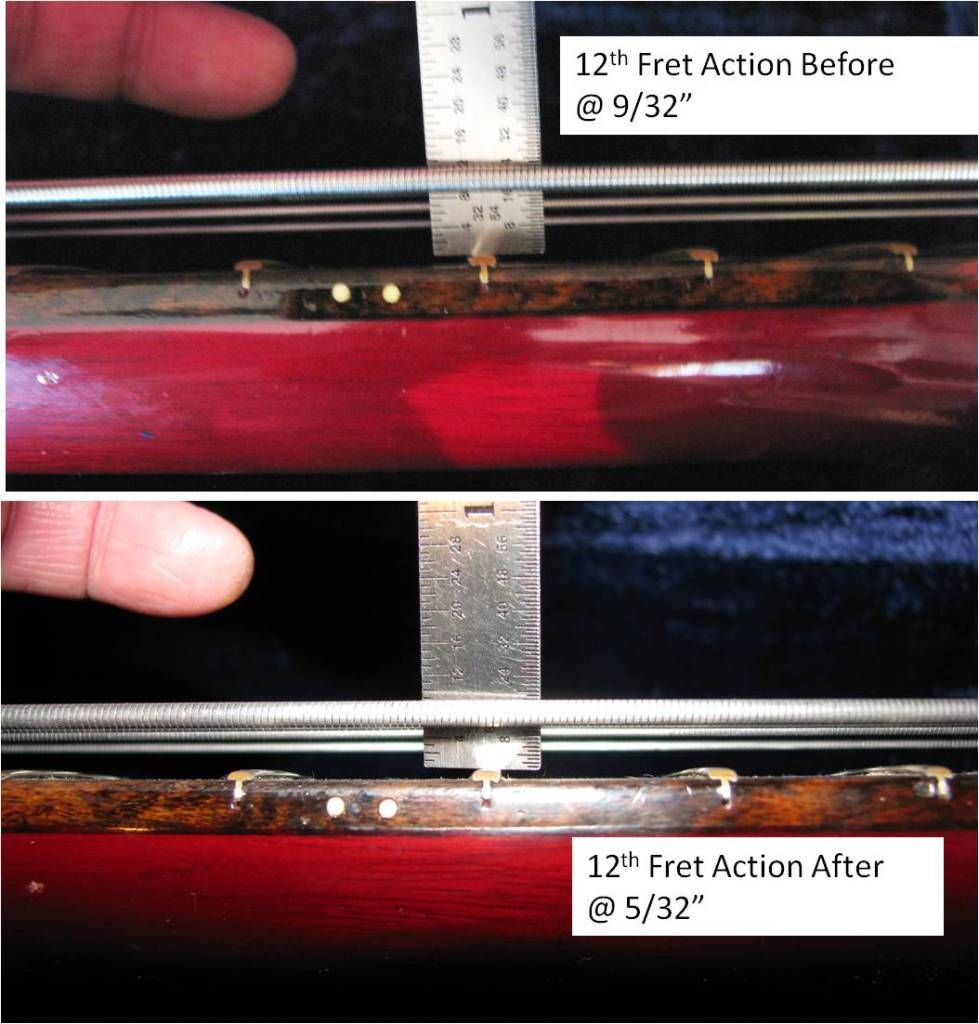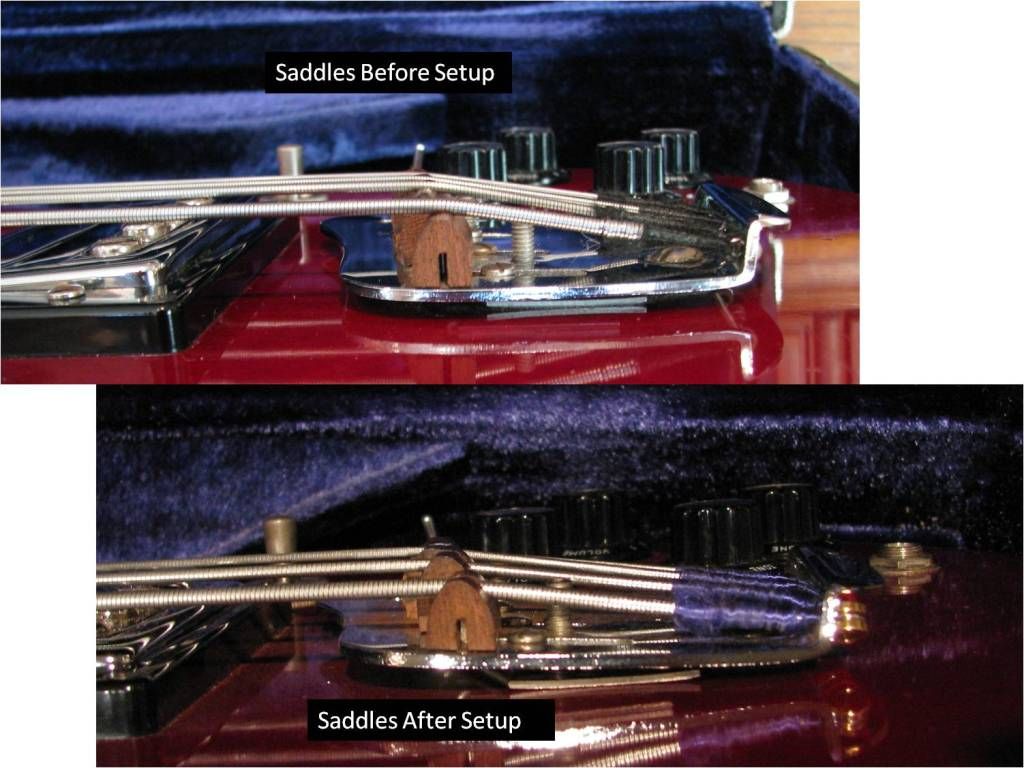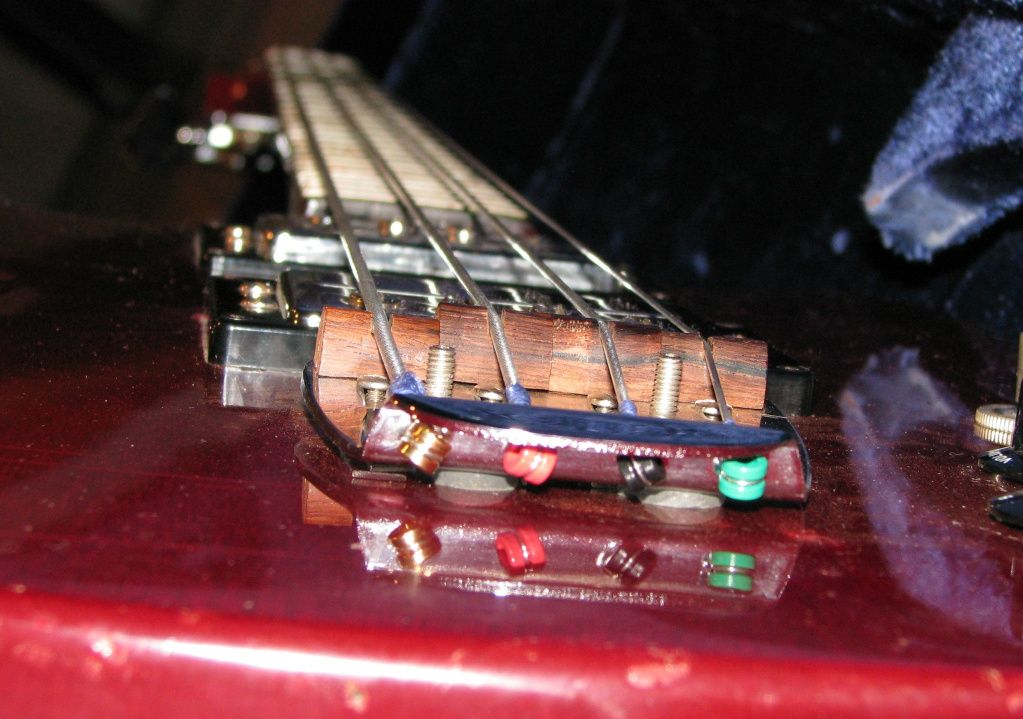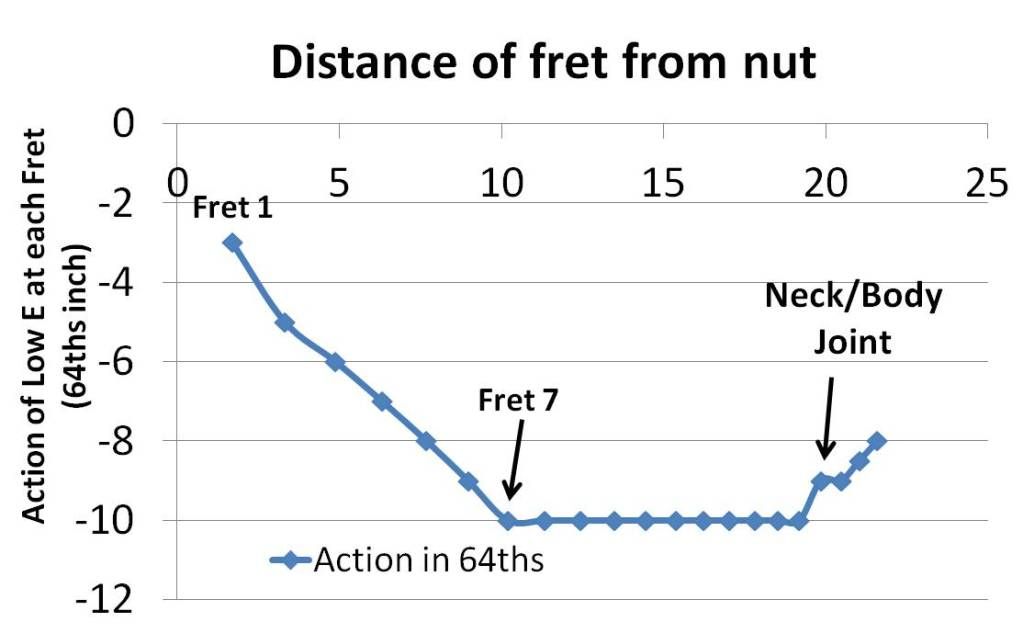jthrel
Member
Hello LTG'ers,
I've just located and purchased a '73 JS Bass II. HOWEVER, she has a bowed neck that needs your advice.
First the GOOD. This is a cherry, short scale bass with two Guild humbuckers and the original hardshell case. The bridge, saddle and tuners appear original and the electronics work.
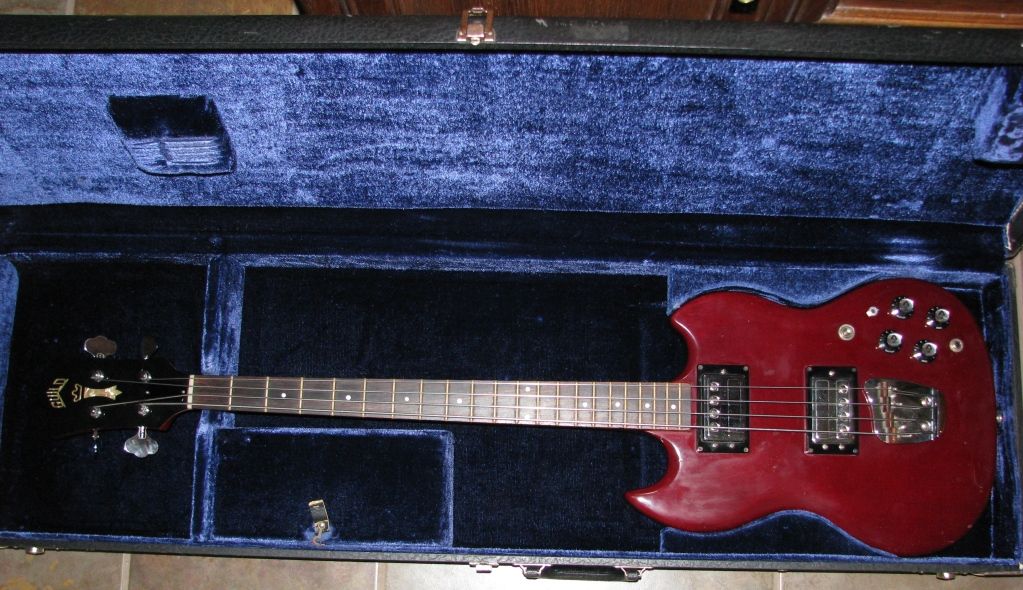
The front of the body has some wear but overall looks good. Note that the hardware store nut on the splitter switch is not correct.
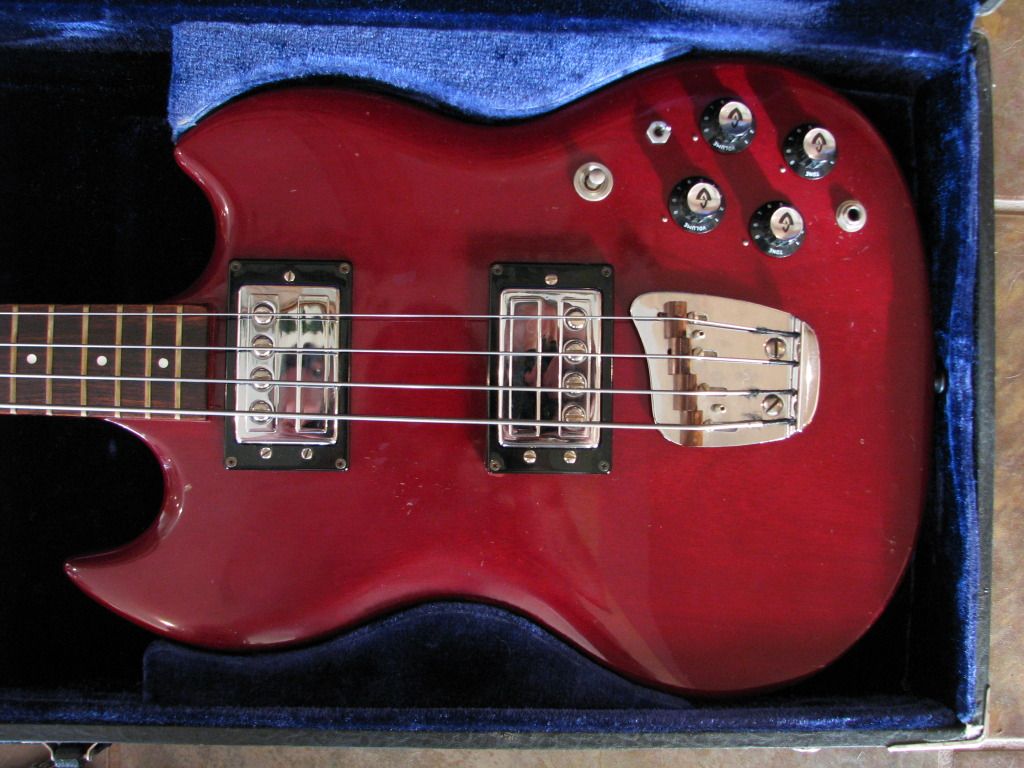
The back of the body has a fair number of "careless" scratches from buckles and buttons.
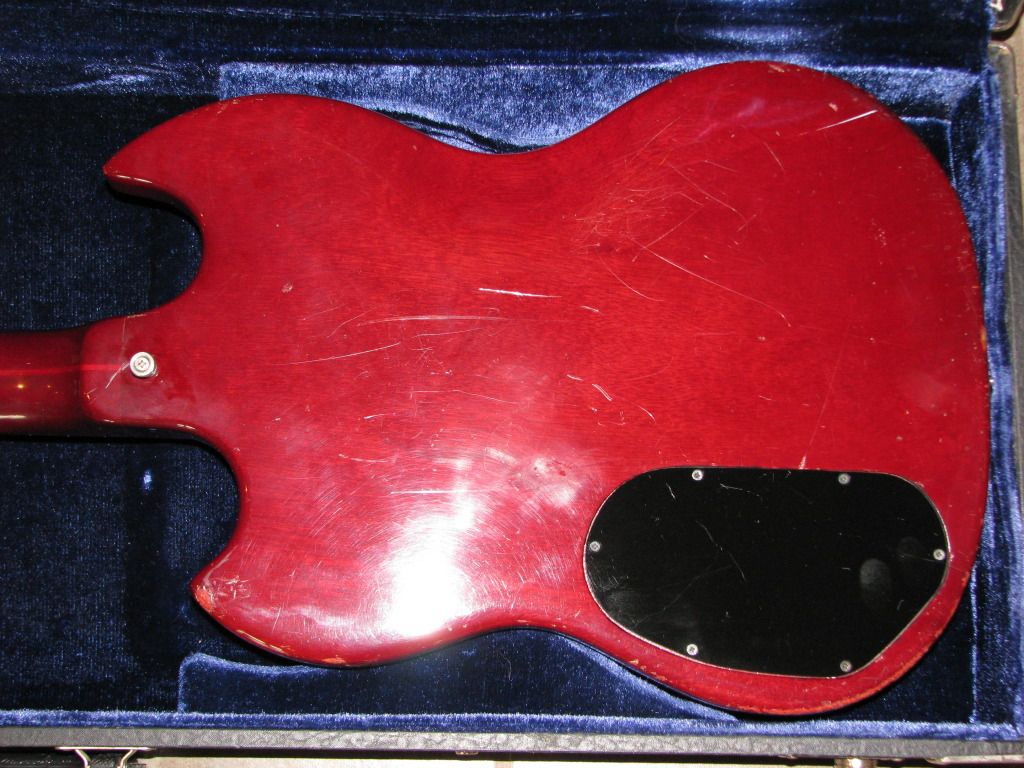
The lower, back edges of both the upper and lower bouts are kinda’ banged up.
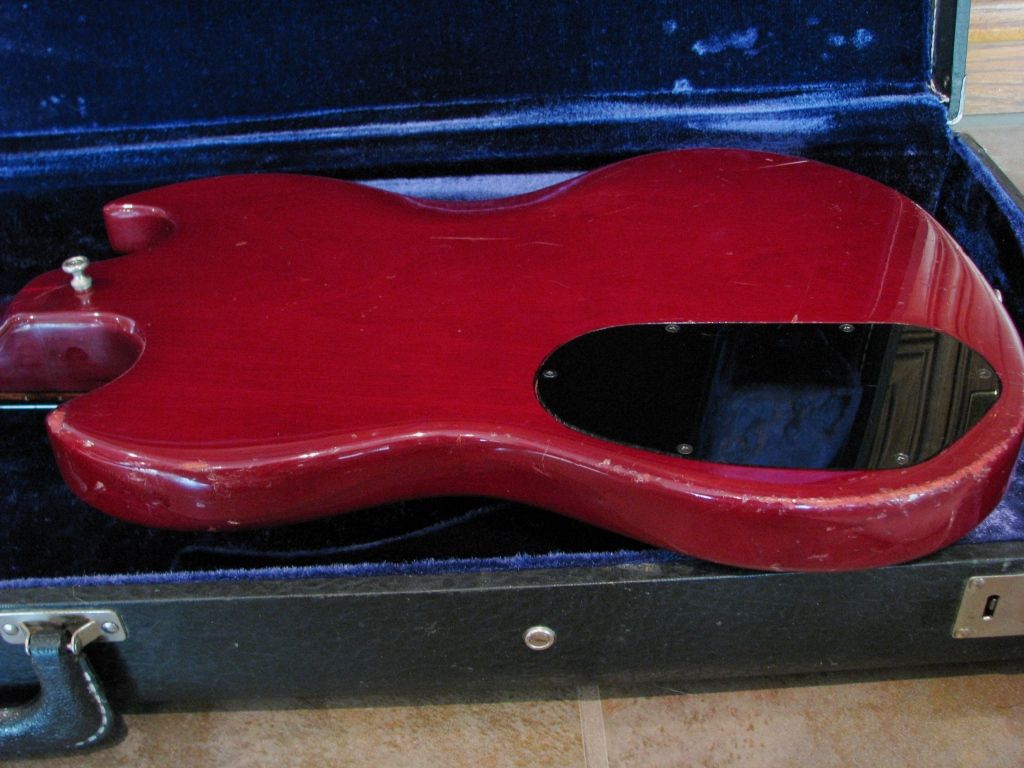
The headstock laminate is intact but a little wrinkled (heat damage I think) and the tuners work well.

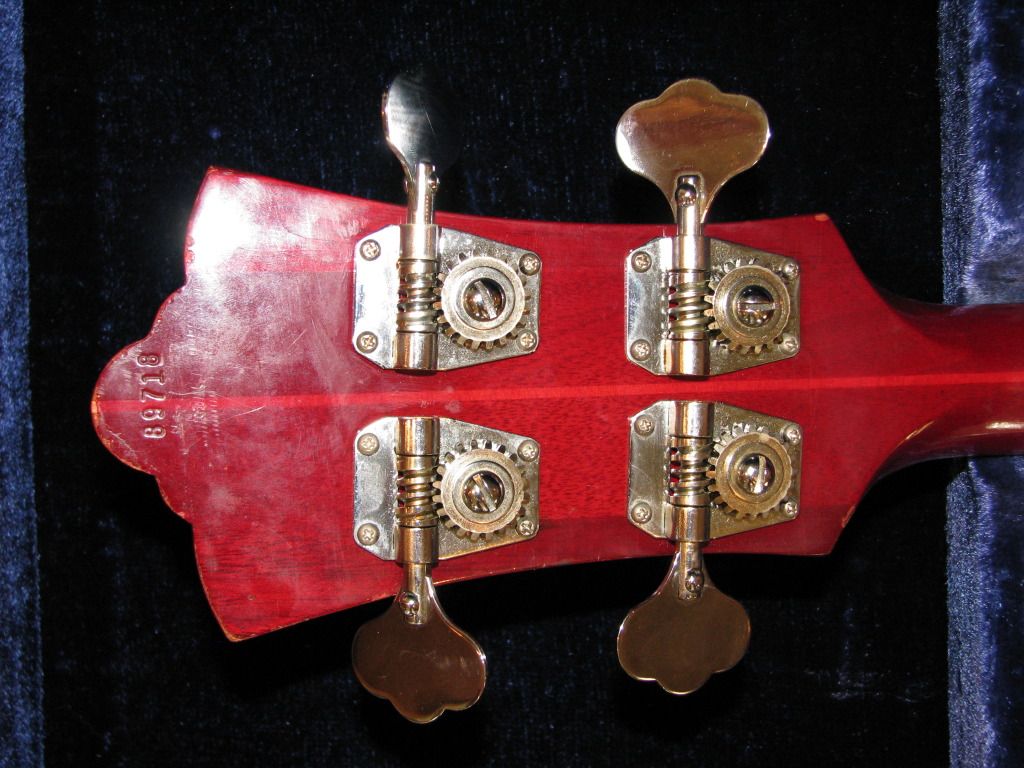
Now for the BAD. The neck is bowed as you can see in the series of pics below. Compare the string action at the the 1st fret and 12th fret in the first picture. The action at the 12th fret is slightly more than 1/4". This provides a negligible string angle across the saddles and the bridge is as low as it goes. Yep, the strings pop out of the saddle grooves when the strings are plucked with gusto.


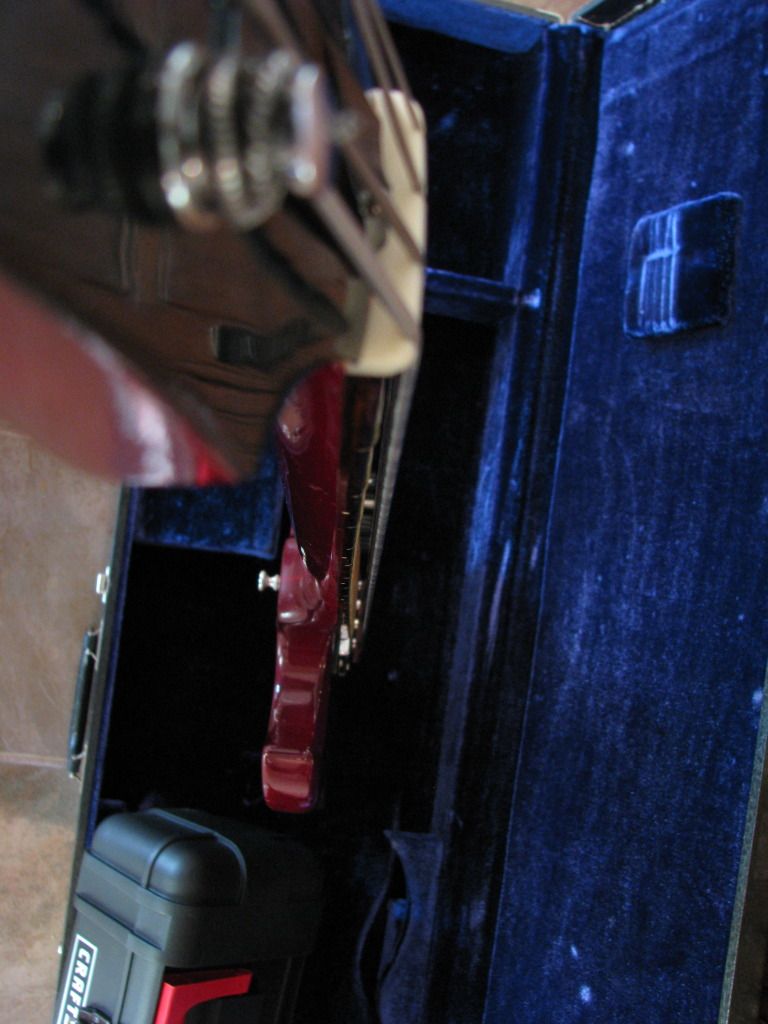
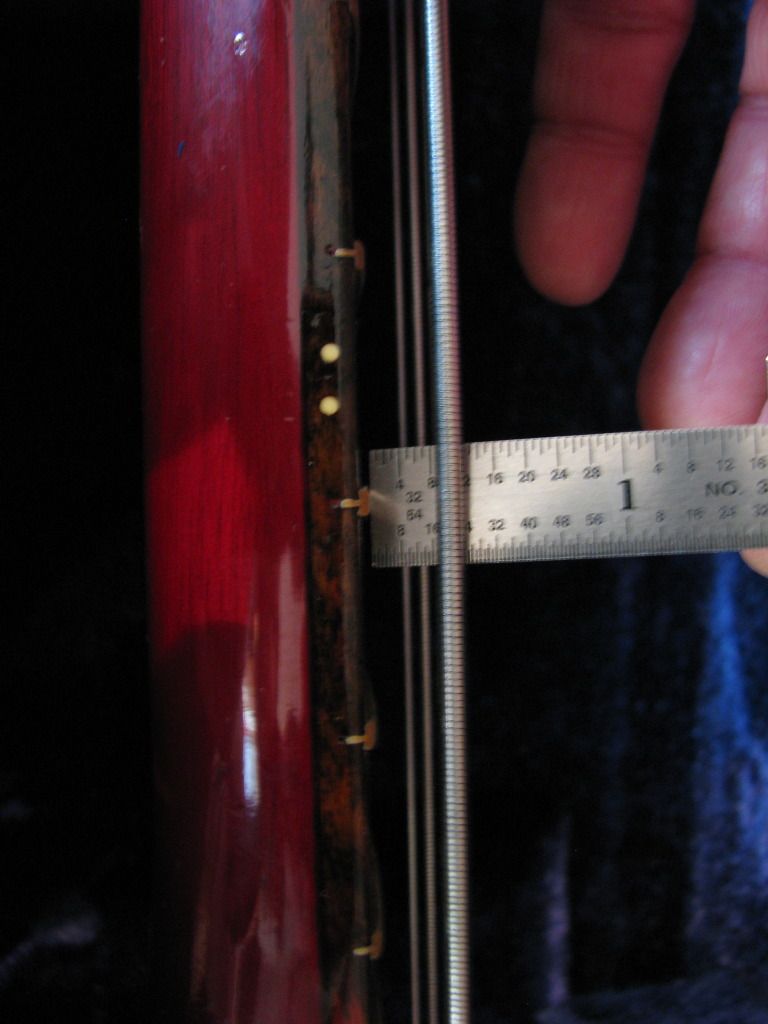

I have not tried the truss rod adjustment as yet but the nut looks like it has been adjusted previously (cracked truss rod cover and a lot of thread rod protruding from the nut already). I’m hauling the bass to a luthier for a consult this week but would appreciate your opinions and experiences with neck issues such as this.
Thoughts? Kudos? Tomatoes? Junk? WHAT! I'm torn between the joy of discovery and buyer's remorse.
Al
I've just located and purchased a '73 JS Bass II. HOWEVER, she has a bowed neck that needs your advice.
First the GOOD. This is a cherry, short scale bass with two Guild humbuckers and the original hardshell case. The bridge, saddle and tuners appear original and the electronics work.

The front of the body has some wear but overall looks good. Note that the hardware store nut on the splitter switch is not correct.

The back of the body has a fair number of "careless" scratches from buckles and buttons.

The lower, back edges of both the upper and lower bouts are kinda’ banged up.

The headstock laminate is intact but a little wrinkled (heat damage I think) and the tuners work well.


Now for the BAD. The neck is bowed as you can see in the series of pics below. Compare the string action at the the 1st fret and 12th fret in the first picture. The action at the 12th fret is slightly more than 1/4". This provides a negligible string angle across the saddles and the bridge is as low as it goes. Yep, the strings pop out of the saddle grooves when the strings are plucked with gusto.





I have not tried the truss rod adjustment as yet but the nut looks like it has been adjusted previously (cracked truss rod cover and a lot of thread rod protruding from the nut already). I’m hauling the bass to a luthier for a consult this week but would appreciate your opinions and experiences with neck issues such as this.
Thoughts? Kudos? Tomatoes? Junk? WHAT! I'm torn between the joy of discovery and buyer's remorse.
Al


